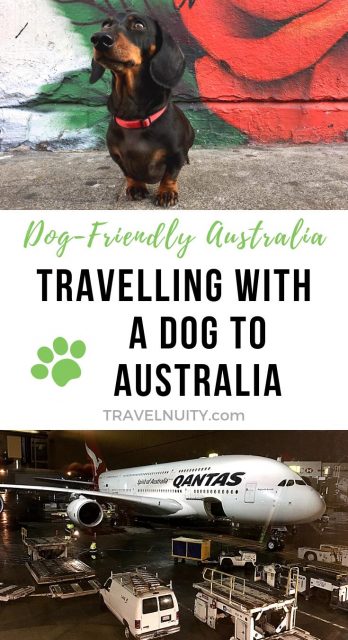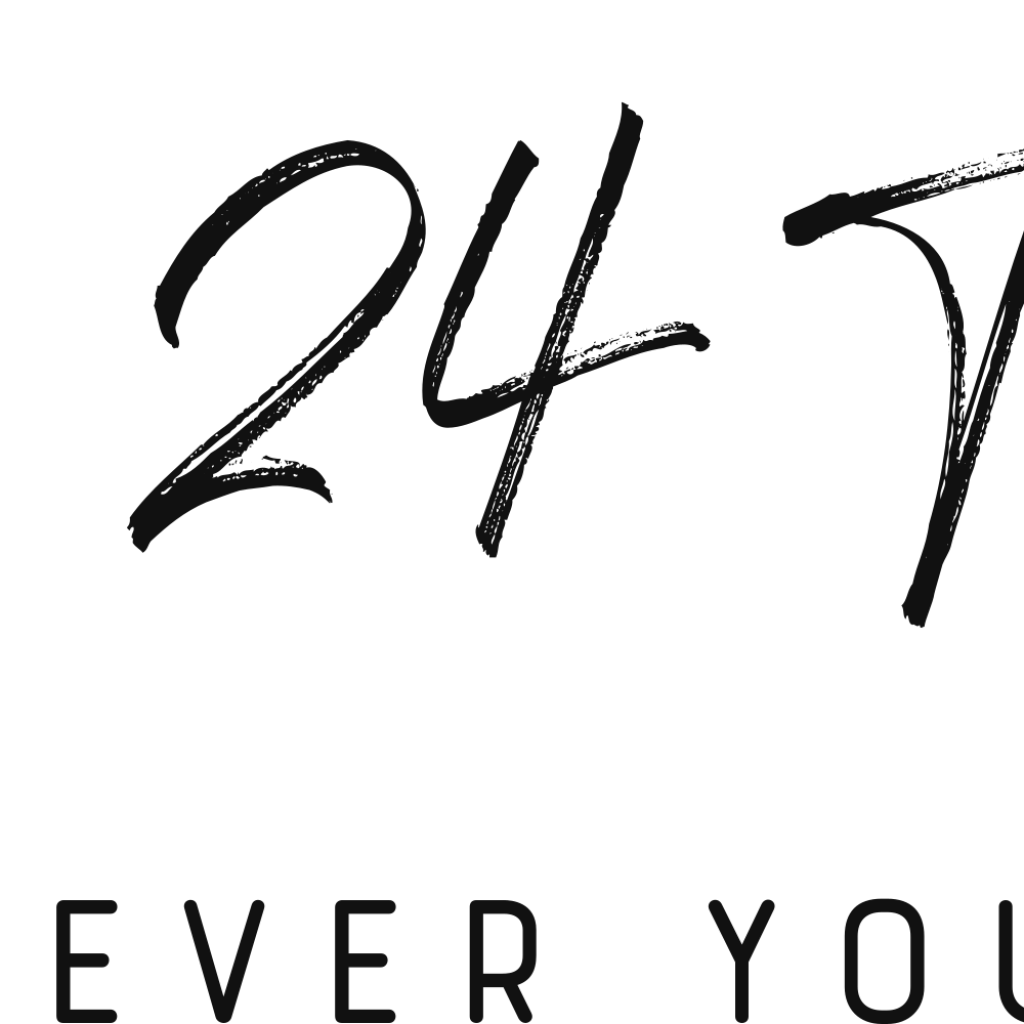While travelling around Europe with my dog during 2017 and 2018, I read numerous reports about how expensive it would be to fly a dog to Australia, something we were planning to eventually do when we returned home in late 2018.
The dogs I read about were various sizes, plus were flying from different parts of Europe, or some were flying from the US. However, what all stories had in common was how expensive it was, at least going through a pet transport company.
So as I started to make plans to head back to Australia, I thought to myself, why don’t I organise my dog’s transport back to Australia by myself, without using a pet transport company? After all, we were becoming pros at travelling around the world with our dog.
Here’s what that process entailed and my experience bring my dog to Australia in late 2018, including the cost of bringing a dog to Australia. Be warned, this is a long post – so I’ve provided some links for you to jump to each section.
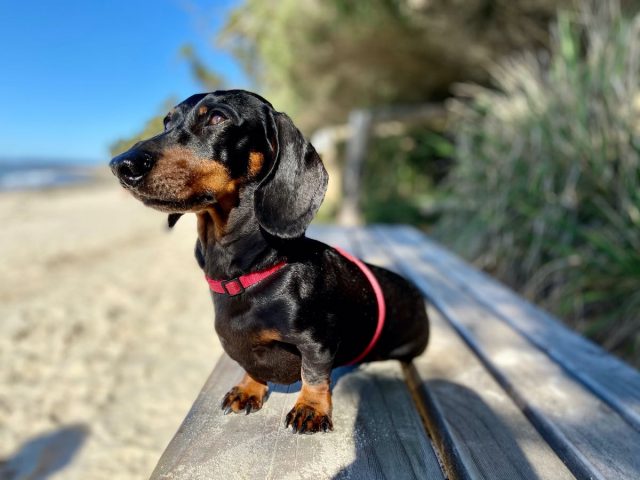
Choosing an Export Country
The first step you should do when planning on bringing pets to Australia is to look at the clear instructions provided online, a rather long and scary looking list. But my next step was something that wasn’t even on this list: it was deciding from which country we would fly back to Australia with our dog.
All the preparations need to take place in a single country (unless we got permission from the authorities in the export country, as noted in the documentation). But we were travelling around Europe, and not usually spending that long in any one country.
Another related factor was the choice of airline. Many airlines stipulate that pets travelling to and from Australia must be booked with an animal transport company.
However, I knew that Qantas was okay with pets being booked directly, as long as it was a direct flight or flights with a single code. Travelling from Europe to Melbourne (where the only quarantine facility is located in Australia, and where pets must fly to), the only option was QF10, from London to Melbourne.
(Note that since 2020, Qantas has stopped allowing direct bookings for pets, and still says this on their website in 2022, although I’ve heard some whispers they are again allowing some direct bookings.)
However, if we firstly headed to the USA (an easy destination to travel to with a dog), we could also take advantage of direct flights from San Francisco or Los Angeles to Melbourne. The USA was on my wishlist of destinations to visit, so we decided to head home via the US. There was also the advantage that it was an English-speaking country, so we wouldn’t have any language difficulties.
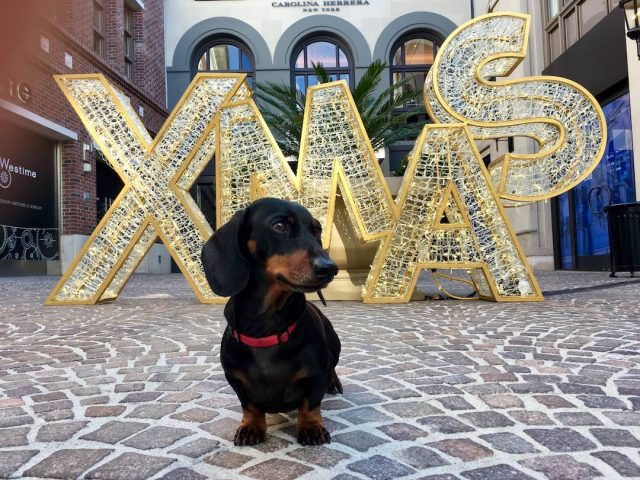
Steps to Prepare My Dog for Export to Australia
If you’re starting from scratch, the preparations for taking a dog to Australia can take over 7 months, depending on the country you are exporting your dog from.
However, because our dog, Schnitzel, was already vaccinated for rabies and had a rabies titre test performed before leaving Australia (which was still valid), our time needed to prepare our dog for export was greatly reduced, although it was still almost as complicated.
1. Selecting a Vet
Once we had decided to travel via the USA to export Schnitzel back to Australia, our first step was to select a government approved vet in the USA. I asked online in an expat group and received a recommendation for Beverly Robertson Veterinary Clinic in Los Angeles. I also checked where they were located (given the size of the city) and their website.
I initially emailed Beverly Robertson with a few questions I had, and received prompt and informative replies. Later on I emailed them to make appointments for Schnitzel’s required vet visits.
As I wasn’t yet in the US, I managed to do this entirely through email, and I found the staff at the vet clinic to be familiar with the steps required for Australia, which was quite reassuring. Better for someone else to double check my date calculations in advance rather than realise an error later!
I actually should have started planning his appointments earlier, though, as I discovered that the test results took longer than I had expected to receive back in the US. This brought forward when I needed to schedule his first appointment, though luckily I could still fit the appointments around the travel plans we had started to make.
I recommend contacting your selected vet well in advance to check over timelines, before making any further plans.
2. Rabies Vaccination & Rabies Titre Test
Usually the first major step required to prepare your dog to travel to Australia is to vaccinate them against rabies and have a rabies titration test performed. Luckily, as I mentioned above, we did this before leaving Australia. Plus less than 2 years had passed (as the rabies titre test result is only valid for 2 years for the purpose of importing a pet to Australia).
The additional advantage of having the titre test done before leaving Australia (at the Australian Animal Health Laboratory), was that we didn’t require an RNATT declaration to apply for an import permit, as mentioned on this page with tips for Australians taking their pets overseas and then returning.
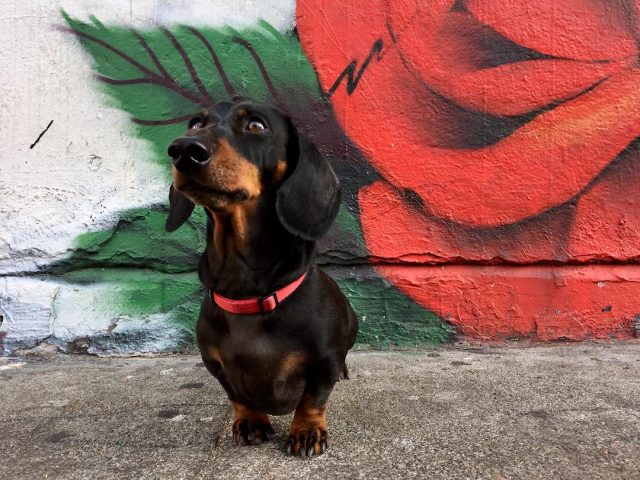
3. Applying for an Import Permit
The next step was to apply for an import permit, on the Australian Biosecurity Import Conditions website, which needed to be done at least 42 days in advance. The website is quite complicated, as it covers all types of imports, but once I figured it out where to get started, it was a fairly simple form.
The import permit is quite expensive – $480 AUD just for a permit, our first cost for returning our dog to Australia. We applied for the permit four months before flying back to Australia. It was then valid for one year.
The only hiccup I ran into during this step is that the export contact had to have a US address, so I couldn’t use my Australian address I used elsewhere on the form. As we didn’t yet have a US address (even a hotel), I asked a friend in the US if I could use their address.
The same issue would probably apply if you tried to list a US (or other foreign) address in the import details section – you probably need to use your future Australian address or another Australian address. We never received any letters at the address we supplied – it was just a paperwork requirement.
4. Booking Quarantine
The next step was booking quarantine, at the Post Entry Biosecurity System website. Click on New Reservation on this page. I’ve seen recommendations to not use the site on a mobile phone – use a larger screen instead.
The quarantine reservation was also quite easy to do, although I had to follow up to get my reservation finally approved, a month after I initially applied. Apparently this was because I made the reservation so far in advance (3 1/2 months out), although I was just following the order of steps on the check-list!
The first time I called up because my reservation hadn’t yet been approved, I was told that reservations were reviewed in order of quarantine date, despite a 10-day approval period being mentioned on the site. After a couple more weeks I sent a follow-up email, and Schnitzel’s quarantine reservation was finally approved.
In particular, I wanted to make sure it was definitely approved, as I knew that our booking was for a busy time of the year, early December. Be warned that the quarantine facility doesn’t accept new arrivals during the second half of December – check the dates each year.
5. Booking Flights
About the same time as booking Schnitzel’s quarantine, I also initially contacted Qantas Freight to get a quote for his flight from Los Angeles to Melbourne. This is the full page with details of their service for shipping animals internationally.
I sent an email to the email address ([email protected]) provided on the form for Qantas international pet transport originating in Australia. My email was then forwarded on to the relevant overseas office (Qantas Freight in LA).
I quickly received a quote back (well, I actually received two slightly different quotes from people in the same office). However, I was also advised I couldn’t actually book until a couple of weeks before the flight.
Unlike with human airline tickets, flying an animal via freight has a set price (based on either weight or crate dimensions, whichever is more expensive), rather than a fluctuating ticket price.
Note that it’s not possible to fly with your dog in the cabin to Australia, unless you are chartering a private jet, whether individually or as part of a group.
6. Visiting the Vet
During the two months before exporting your pet to Australia, expect to make at least three vet visits to perform all the steps required, perhaps more depending on your requirements.
Schnitzel’s first vet visit occurred in New York City (rather than in Los Angeles as planned), due to the duration it would take to later get test results. This visit occurred 6 1/2 weeks (47 days) before we flew to Australia. During this vet visit the following occurred:
- 1st dose of canine influenza vaccine (an extra step currently required to export dogs from the USA to Australia)
- 1st external parasite treatment
We provided the details of our NYC vet to our LA vet, who then requested details of the treatment so they had a copy for when the health certificate was later being filled out.
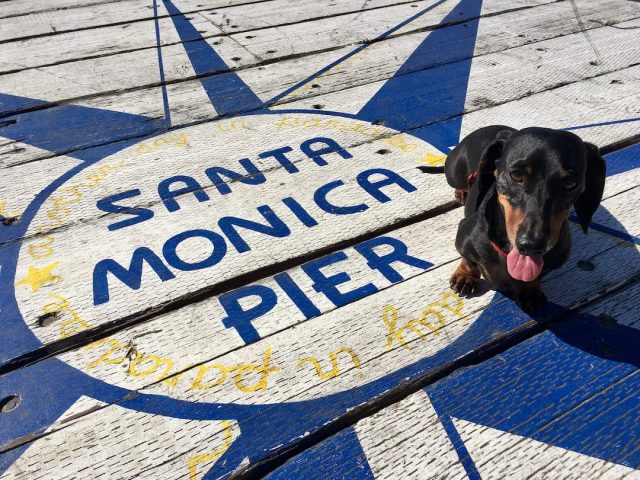
Our second vet visit (in LA) occurred 24 days later, 23 days before we flew to Australia. During this vet visit the following occurred:
- 2nd dose of canine influenza vaccine
- 2nd external parasite treatment (as each treatment was only valid for 31 days, and it still needed to be valid until the date of export)
- Blood sample for testing for leishmaniais, leptospira and ehrlichia (our vet then received these test results 2 1/2 weeks later, just before our final visit)
- 1st internal parasite treatment
My main concern was about the test for leishmaniais. This disease which is spread by sand-flies exists in southern Europe. And immediately before travelling to the US we had spent six weeks in Greece, the country with the highest incidence.
We took multiple preventative steps, so it was unlikely our dog would have caught it, but I was very relieved for our vet to receive the test results, with the all clear for each disease.
Our third and final vet visit occurred just 2 1/2 days before our evening flight. It needed to be within 5 days of our departure (although ideally not a full 5 days before, in case your flight is delayed by a day). During this vet visit the following occurred:
- 2nd internal parasite treatment
- Clinical exam
- Health certificate completed covering all vet visits, along with the lab test results ready to take for endorsement
Note that my dog didn’t require testing for brucellosis, as he had been desexed, or for babesia canis, as he hadn’t travelled to any countries where this is a requirement.
As there is a short timeframe for this final vet visit (within 5 days of your departure) and pets are recommended to arrive in Australia on weekdays (with weekend arrivals subject to approval), be careful about the timing of your flight back to Australia. Our vet visit was on a Monday, before our dog flew out from LA late Wednesday, arriving in Melbourne Friday morning.
7. Finalising Quarantine & Flight Bookings
In between the 2nd and 3rd vet visits I finalised Schnitzel’s quarantine reservation and booked his flight.
His quarantine didn’t need to be confirmed and paid for until 7 days before his expected arrival, but it needed to be done before booking his flight. Confusingly, I needed to enter his Airway bill number (normally received when you book the flight), into the quarantine booking.
Luckily Qantas gave me a number for his incomplete booking, although later re-reading my emails I realised there was a dummy number they had provided (which I could later change to the correct number).
So, I confirmed and paid for his quarantine, the single biggest cost of transporting my dog back to Australia. Then I booked his Qantas flight over the phone, confirming the time and address to drop him off, plus his crate requirements.
About the the same time as this, I also booked his flight from Melbourne up to Sydney. Unfortunately, there is only a single quarantine facility in Australia, near Melbourne Airport. And as we couldn’t visit him in quarantine, we changed our minds about picking him up ourselves.
We booked his flight up to Sydney through Jetpets, who we previously used to fly Schnitzel overseas from Sydney to Madrid. I then added the details for Jetpets to my quarantine booking, so they had the authority to pick him up.
8. Endorsement of Health Certificate
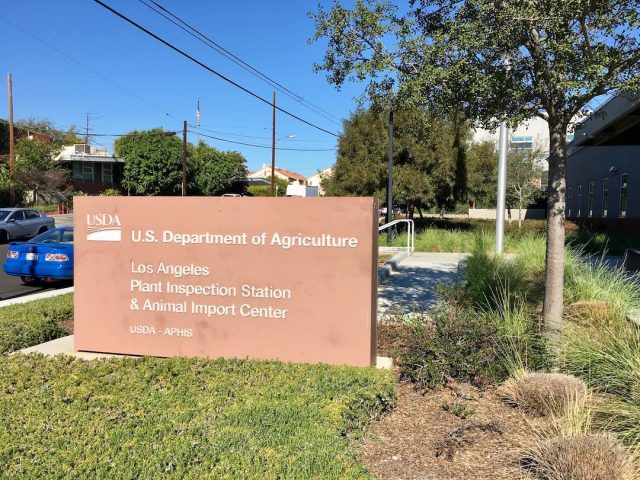
Once Schnitzel’s health certificate had been complete by the government approved veterinarian, it then needed to be endorsed by an official government veterinarian. In the US, this occurs at the USDA APHIS Veterinary Services endorsement offices. As of 2018, some operated a walk-in service, while the one in LA required an appointment. So I made an appointment for the same day as our final vet visit.
(Note that the situation for endorsements has changed in 2022, with endorsements either done electronically by the Veterinary Export Health Certification System (VEHCS) or by shipping the paperwork through a courier company. Australia accepts the digital signature and digital endorsement. )
This is the stressful point, at which if all the vet preparations haven’t been properly completed, including on the correct dates, it could be rejected. I saw this happen to one other woman also taking her dog to Australia during my visit. The office advised her to speak directly to the Australian government department to see if she could get an exemption, but I don’t now what was the result.
My first slight hiccup at the Veterinary Service office was that I didn’t bring along a print-out of Schnitzel’s full import permit, just the health certificate part. This was easily fixed, by emailing the staff member the permit to print out.
However, as well as the full permit and health certificate, plus his rabies titre test lab report and lab report for the other three tests, the office also required another lab report. This was because one of the tests was sent to a separate lab to be done, although the result was still included in the main lab report.
What ensued was 3 hours of backwards and forth trying to get the extra lab report, speaking on the phone to my vet and then the vet speaking to the various labs. My vet said that normally this wasn’t required, so either someone was being extra strict or they had changed the requirement.
A few tears were shed, but finally, we received the extra lab report by email and everything was endorsed. The hardest part is they wouldn’t review everything else and say if everything else was in order, until the extra lab report was received!
For this reason, I recommend getting your certificate endorsed straight after your final vet visit, not the day of your flight, in case any issues come up that take longer to sort out.
9. Buying a Crate
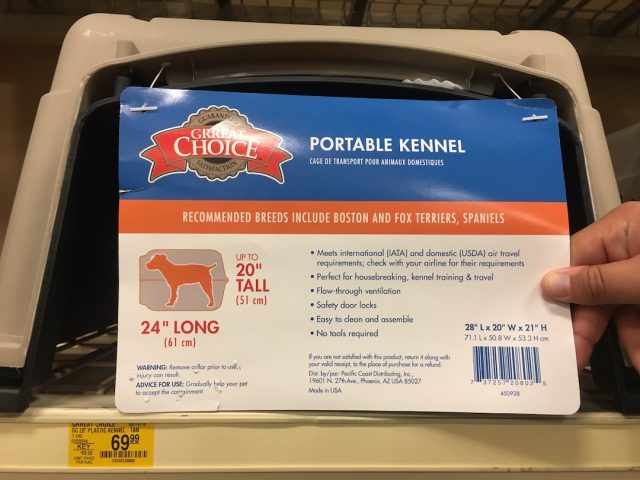
Because we were travelling around in a car and didn’t want a large crate taking up most of our car boot, we left buying a crate until late, although we investigated the options earlier and had already selected which crate to buy.
We went with the basic Grreat Choice kennels sold by Petsmart. Fancier options are available, but we didn’t know whether we would use it more than once. Also, the price listed on the website was cheaper than the price in store, so we got them to price-match it.
To determine the size crate required for your pet, the calculations are listed on this IATA page (click on “Do you have a suitable container for your pet?” and “Guidance for Dimensions of Container”). This ensures that your pet can “stand, sit and turn around in a natural matter inside a crate”.
It’s also ideal to test your dog inside the crate before going ahead with the purchase. Additional requirements might be specified by your airline, but Qantas just stated on my phone call it should have metal bolts, which mine did.
In addition to the crate, we bought a puppy pee pad and duct-taped it inside, then added my dog’s old bed. Any bedding is tossed on arrival in Australia, so don’t use something you want to keep. We also added a water bowl that was fillable via a funnel without opening the door, also bought at Petsmart. Some airlines might required food containers and food attached to the outside of the crate.
Qantas said it didn’t require this, but we taped some to the top of his crate, in case of a delay. I also taped his name to the front of the kennel, just above the door. If you’ve got any special instructions, tape them to the outside of the kennel.
After picking up and constructing the crate, I did have a minor panic that it wasn’t as large as I had remembered, and that we had the smaller size and would be rejected by Qantas Freight. (The label at the front was missing when we purchased it.) We ended up going back to the store, but it was all good in the end!
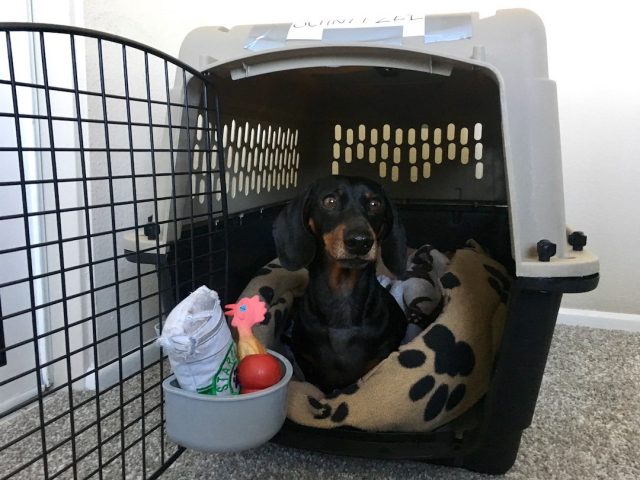
10. Dropping My Dog Off
The very final step was to drop Schnitzel off at the freight terminal. We had been given a set time to drop him off, about 6 hours before his actual departure. A few hours before this we gave him his final meal and drink, then encouraged him to do his business on the grass near the freight terminal when we arrived.
Inside the terminal it was bustling with various drop-offs. The drop-off took longer than we expected, but it was quite relaxed. There was no measuring that the animal and the crate met the guidelines, and no issues were brought up.
It was only at this point we paid for his flight, along with filling in the required freight paperwork. His paperwork was attached in a zip-lock bag to the outside of the kennel (provided by Qantas), along with some live animal stickers.
It was then time to say our final goodbyes. At least we knew Schnitzel would be with experienced hands. He wasn’t the only pet being dropped off that evening for the Qantas flight to Melbourne; in fact we asked and were told up to 20 animals would be on the flight! However, it was extra tough saying goodbye knowing we wouldn’t even see him on the other end, that he was going straight into quarantine.
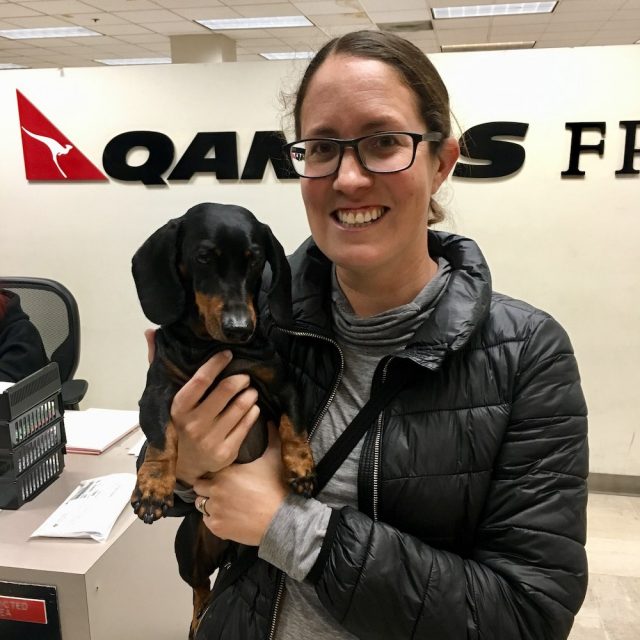
My Dog’s Stay in Quarantine in Australia
All dogs and cats that arrive in Australia have to spend a minimum of 10 days in quarantine. It’s shorter than it used to be (it was decreased from 30 days in 2012), but this is partially because the preparation steps required before you can export your pet have increased.
If there is an issue with your pet, they may require a longer stay, but amongst people I’ve spoken to their pet has only stayed 10 days.
This means that you can’t meet your pet on arrival at the airport in Australia, they’re instead whisked off to the quarantine facility in Mickleham, near Melbourne Airport. It was partially due to this that we flew directly to Sydney, instead of on the same flight as Schnitzel to Melbourne.
Our flight back to Sydney left the same night, scheduled for 5 minutes after Schnitzel’s flight. We tried to catch sight of Schnitzel being loaded onto his plane, but our gates were too far apart. On our arrival in Australia, we then checked the status of his flight, and saw that it soon safely landed. And later that afternoon I received an automated email from quarantine to say he had arrived.
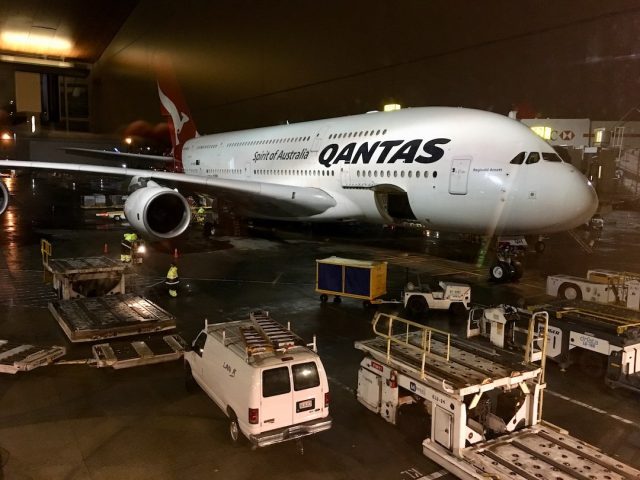
As I was naturally a bit worried about how he coped with the long flight to Melbourne, I tried to call quarantine (and gave up due to the long hold time), but sent an email. I received a reply two days later saying that he arrived safe and well, was eating and toileting, plus his arrival weight. It was a relief after the long flight and not seeing him on the other end!
He was due to be released from quarantine on a Monday, and then immediately fly up to Sydney as organised by Jetpets. I hadn’t yet heard anything further by Thursday, so I called up again. I knew I had to schedule a release appointment in the quarantine system once he was given the okay to be released.
On the phone (after a 20 minute hold) I was told that everything was in order (plus he was eating, toileting, and friendly!) Just the vets hadn’t done their final checks, as it was a busy time of year. That would occur Friday or Saturday morning.
Just after lunch on Friday I received the confirmation that Schnitzel would be released on Monday, and scheduled his release appointment for Jetpets to pick him up.
With quarantine, if there are issues with your pet, that’s when you’ll hear more from them. Otherwise, don’t expect more than a couple of automated emails about the status of your dog and when you need to schedule the release appointment (which occurs between 10am and 12pm on the release day).
On the Monday, I received an email from quarantine to say he had been released, but I’d already received an email from the Jetpets driver who took him to Melbourne airport, complete with a photo. It was great to get a photo of him, although it was only a few short hours later that we met him at the Jetpets facility in Sydney. He was very excited to be re-united with us!!
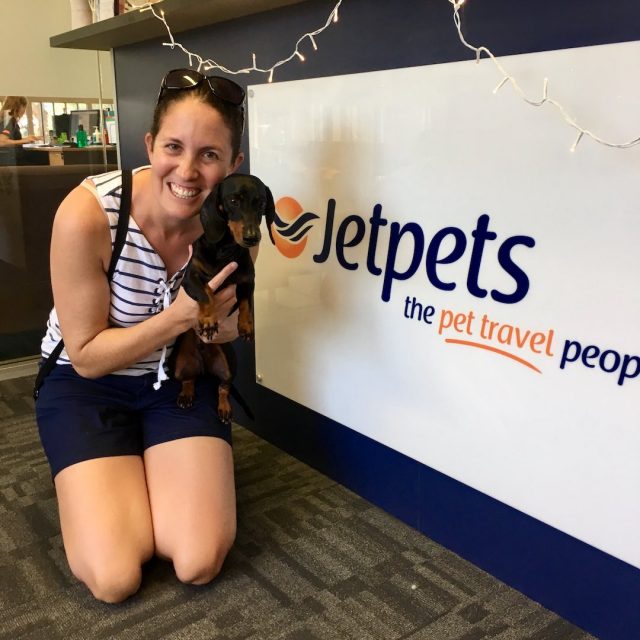
During Schnitzel’s stay in quarantine, he noticeably lost some weight, which was confirmed once we weighed him. However, he had been getting slightly overweight, and it was probably just due to the amount of food he was fed being slightly less than what we gave him. He was possibly a little quieter for a day, but still our usual excitable and lovable Schnitzel, back together with us!
Find out more about quarantine for your dog in Australia
Cost of Bringing A Dog to Australia
Finally, here’s a breakdown of all the costs for bringing our dog back to Australia (following the above steps), organising everything myself.
Import permit: $480
Quarantine application: $29
Three vet visits: $1537
Standard quarantine fee: $1581
USDA APHIS VS endorsement: $204
Crate and water bowl: $82
Flight from LA to Melbourne: $1314
Flight from Melbourne to Sydney including pick-up from quarantine (with Jetpets): $235
Additional charge from quarantine (listed as “recovery of airline handling charge’): $97
Total cost: $5559 AUD (approx. $4000 USD)
Naturally, the cost of bringing a dog to Australia will vary depending on the size of your dog, the location you’re flying from and the exact steps that you need to perform. But I hope this gives you an indication of what it can cost.
Many of these costs are constant (mainly the government ones, except they occasionally go up). When comparing our costs to those quoted by other people online, the vet visits in other countries were often lower (for instance, someone exporting their pet from Canada listed a total of $833 AUD for the 3 vet visits, nearly 50% less than our costs).
Going through an animal transport company typically adds about $1000 AUD more to the total cost, although it is difficult to compare as often the costs are not broken down.
Find out more about the cost of bringing a dog to Australia
Was It Worth Organising Myself?
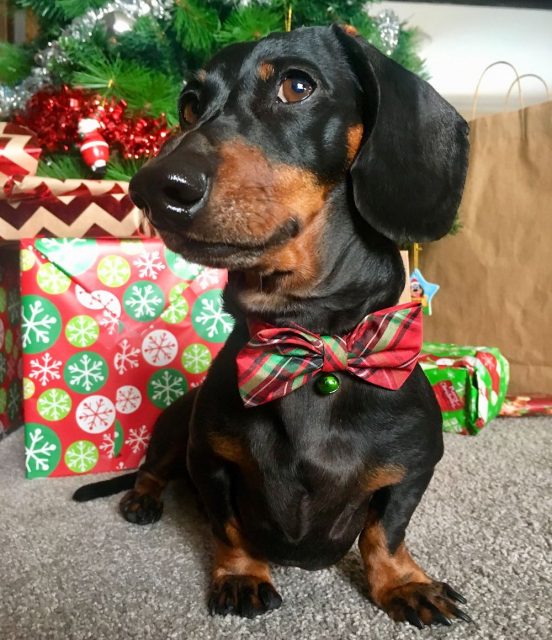
So, was it worth organising everything by myself to bring my dog to Australia? While I don’t know exactly how much it would have cost if I organised everything through an animal transport company (instead of just the final flight to Sydney), I know it would have cost significantly more. I likely saved around a thousand dollars, perhaps more.
In return, I did stress about it a few times during the journey. (Particularly when we had the issues at the USDA APHIS Veterinary Service office!) And there were some steps that weren’t clear at first, that professionals who do this every day would have been more familiar with.
Overall I’m happy with the saving that I made, in return for my extra work. However, that’s partially as nothing went wrong in the end.
If something hadn’t been prepared properly, or there was an issue with the flight, or a number of other things, I may have had to turn to an animal transport company in the end, and it would have been a lot easier if I was dealing with one all along. So, keep that in mind!
Read more about whether you should use a pet transport company
You May Also Like
Inspired? Pin this to your Pinterest board!
